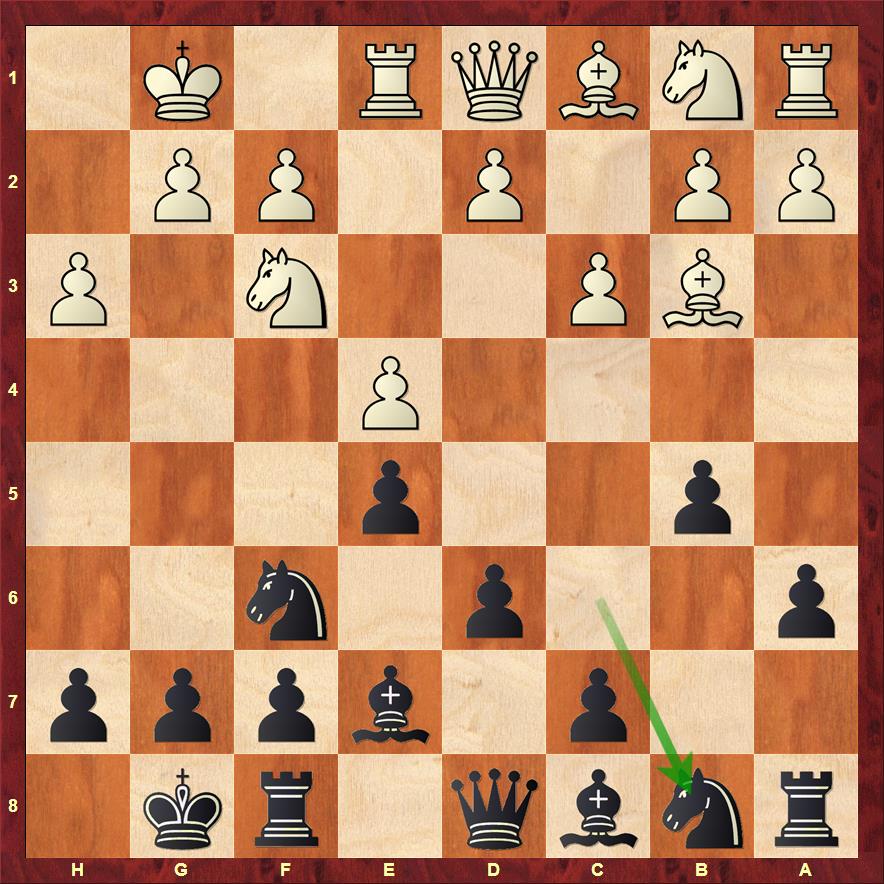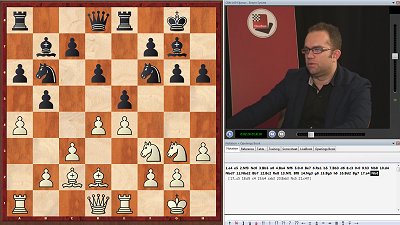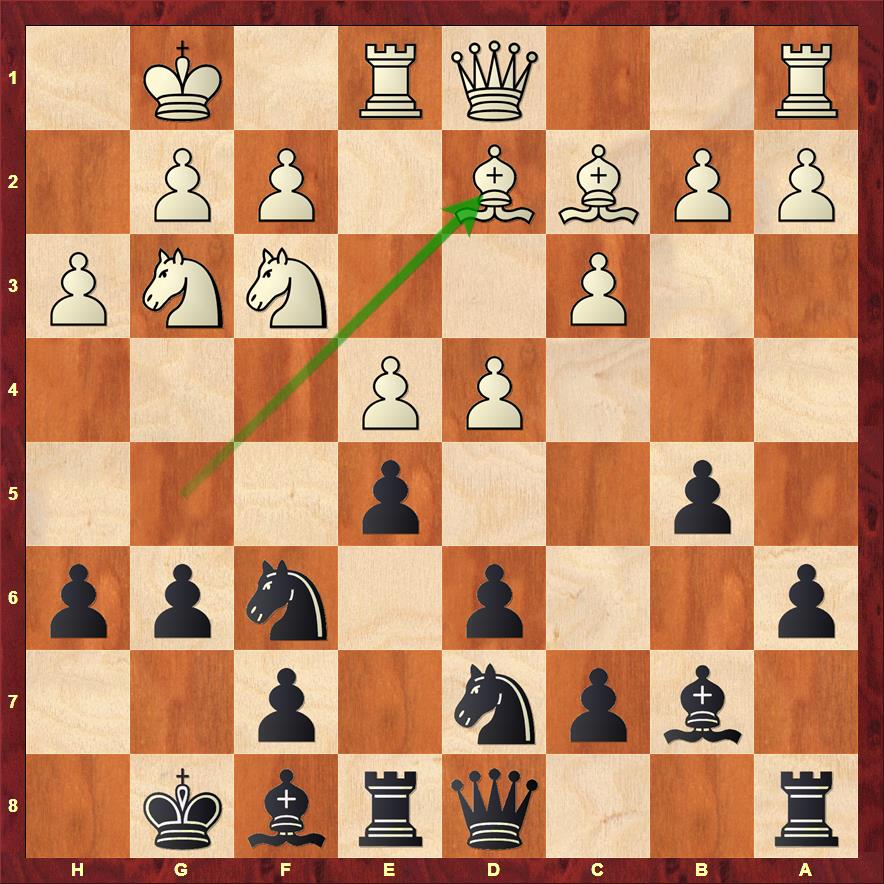


ChessBase 17 - Mega package - Edition 2024
It is the program of choice for anyone who loves the game and wants to know more about it. Start your personal success story with ChessBase and enjoy the game even more.
In the first round of the US Chess Championships Wesley So was paired against Gata Kamsky. We saw the main line of the closed Ruy Lopez which has been played in so many classical games as well as battles of top grandmasters. But the experienced Kamsky was just blown off the board in just 28 moves. What exactly happened? Let's have a look:

[Event "ch-USA 2016"]
[Site "Saint Louis USA"]
[Date "2016.04.14"]
[Round "1"]
[White "So, Wesley"]
[Black "Kamsky, Gata"]
[Result "1-0"]
[ECO "C95"]
[WhiteElo "2773"]
[BlackElo "2678"]
[Annotator "Sagar Shah"]
[PlyCount "55"]
[EventDate "2016.04.13"]
1. e4 {After the game Kamsky said that he had expected Wesley would play 1.d4}
e5 2. Nf3 Nc6 3. Bb5 a6 4. Ba4 Nf6 5. O-O Be7 6. Re1 b5 7. Bb3 d6 {Black makes
it clear that he doesn't want anything to do with the Marshall today - it's time
for the classical main line. Black threatens to win the Ruy Lopez bishop with
Na5 and hence the next move is logical.} 8. c3 O-O 9. h3 {White wants to play d4.
But immediate 9.d4 is met with Bg4. That too is one of the lines, but Wesley
prefers to go for the absolute main line with h3.} Nb8 $5 {Welcome to the
beautiful word of Breyer where for the best co-ordination people are ready to
undevelop. To bring harmony, Black is ready to go to the extreme. It is in
that sense a very hypermodern idea. The knight on c6 wasn't particularly well
placed. Black would be interested to put his knight on d7 and bishop on b7.
Hence Black goes for the move Nb8.} 10. d4 Nbd7 11. Nbd2 Bb7 12. Bc2 {The
thing I like about the Ruy Lopez is that it is very logical. When White played
d4 Black was in time to play Nbd7 to defend the e5 pawn. Now White over
defends the e4 pawn so that he can continue his journey with Nf1-g3.} Re8 13.
Nf1 Bf8 14. Ng3 {Just in time once again! exd4 is now not a threat as e4 is
not hanging. Now Black first stops the knight coming to f5.} g6 15. Bg5 {
This is the third popular move in the position and the one that was used by
Fischer in his match against Boris Spassky in 1992. The main line is a4 and
the second most popular move is b3.} (15. a4 c5 16. d5 c4 17. Bg5 {was
Anand-Carlsen, Norway 2015 and the absolute main line.}) 15... h6 (15... Bg7
16. Qd2 {And now that h6 is not possible the pin on the diagonal is pretty
irritating.}) 16. Bd2 {The reason for exactly retreating the bishop here is to
keep the e4 pawn defended which wouldn't have happened if bishop was on e3. On
d2 it keeps the rook connected and later Qc1 can attack the h6 pawn.} Bg7 17.
a4 c6 (17... c5 18. d5 c4 19. b4 cxb3 20. Bxb3 Nc5 21. c4 {has been played
before and looks like a small edge for White.}) 18. axb5 axb5 19. Rxa8 Qxa8 {
According to Kamsky after the game he should have taken on a8 with the bishop
and left the queen on d8. But the computer thinks that Kamsky's decision of
Qxa8 was not incorrect.} (19... Bxa8) 20. Nh4 $5 {A very interesting idea by
Wesley. Most probably he had seen something similar at home. He would want to
sacrifice the knight on f5 square.} Qd8 (20... c5 21. d5 $14) (20... exd4 21.
cxd4 c5 22. d5 Qa2 23. Qc1 Nh7 $5 24. b3 h5 25. Nhf5 gxf5 26. Nxf5 $40 {
With attack. Somehow these knights on h4 and g3 are always ready to sacrifice
their lives for the kingside attack. So it looks like a deep idea prepared by
Wesley.}) 21. Qc1 $1 Kh7 $2 (21... Nh7 {looks like a safer solution.} 22. Nhf5 {
is the most logical.} (22. Nf3 h5 {and it doesn't look pretty, but Black can
survive.}) 22... gxf5 23. Nxf5 Re6 24. Bxh6 Bxh6 25. Nxh6+ Kf8 26. Nf5 Rg6 $13
{and Black should be able to defend this.}) 22. Nhf5 $1 {Such sacrifices don't have to be
seen in too much depth. White gets two pawns and an attack. He isn't risking
so much with this piece sacrifice.} gxf5 23. Nxf5 Re6 24. Bxh6 (24. d5 {
Opening up the c2 bishop would also have been strong.}) 24... Ne8 (24... Nxe4
25. Bxg7 $18) 25. Bg5 $1 Bf6 {This is refuted very nicely.} (25... f6 26. Bh6
$18) (25... Qa8 {But this doesn't feel right.} 26. dxe5 $5 (26. d5 cxd5 27.
exd5 Bxd5 28. Ne7+ Kh8 {There doesn't seem to be a killer blow.}) 26... dxe5 (
26... Nxe5 27. f4 $16) 27. Bb3 $16) 26. Bxf6 $1 Qxf6 (26... Rxf6 27. Qg5 $18)
27. d5 $1 {The rook is almost trapped.} Re7 28. g4 $1 {A very nice finishing
blow. The pawn is coming to g5 and the rook on e7 would be hanging. A fine
game by Wesley.} 1-0

An important win for Wesley, who would be itching to make a comeback after his not so successful
US Championships last year [picture from official website]

The look on his face says it all. Kamsky cannot believe that he has lost so quickly in his favourite opening.
After the initial moves we reach the following position: 1. e4 e5 2. Nf3 Nc6 3. Bb5 a6 4. Ba4 Nf6 5. O-O Be7 6. Re1 b5 7. Bb3 d6 8. c3 O-O 9. h3 Nb8!?

For the uninitiated this might seem like a totally crazy move. But Gyula Breyer, the man who invented it, was a hypermodernist and had some very original ideas in the opening! According to Mega Database 2016 this undeveloping move has been played in 2300 games to date! Breyer's main idea was to place the knight on d7 where it would not interfere with the work of the bishop on b7. It would give harmony to Black's position.
Kamsky was beaten convincingly in just 28 moves. The logical question that comes to the mind is: where exactly did he go wrong? And I didn't have to go too far away. ChessBase has an entire DVD of five hours 13 minutes by Pavel Eljanov on the Breyer Variation of the Ruy Lopez.

It always helps when you have the world number 12 explaining to you all the intricacies of this complex opening


[Event "?"]
[Site "?"]
[Date "????.??.??"]
[Round "?"]
[White "Eljanov's suggestion (1)"]
[Black "?"]
[Result "*"]
[ECO "C95"]
[PlyCount "58"]
1. e4 e5 2. Nf3 Nc6 3. Bb5 a6 4. Ba4 Nf6 5. O-O Be7 6. Re1 b5 7. Bb3 d6 8. c3
O-O 9. h3 Nb8 10. d4 Nbd7 11. Nbd2 Bb7 12. Bc2 Re8 13. Nf1 Bf8 14. Ng3 g6 15.
Bg5 h6 16. Bd2 Bg7 17. a4 Nb6 $1 {Instead of c6 which was preferred by Kamsky,
this is the move that Eljanov suggests and he gives the following line as his
analysis.} (17... c5 18. d5 c4 19. b4 cxb3 20. Bxb3 Nc5 21. c4 $5) 18. b3 (18.
Qc1 Kh7 19. axb5 axb5 20. b3 Rxa1 21. Qxa1 Qa8 22. Qxa8 Rxa8 23. Bd3 exd4 24.
cxd4 Ra3 25. Rb1 c5 26. Bc1 Ra5 $11) (18. axb5 axb5 19. b3 Nbd7 20. Rxa8 (20.
Bd3 b4 21. cxb4 exd4 22. Nxd4 Nxe4 23. Bxe4 Bxe4 24. Rxe4 Rxe4 25. Nxe4 Bxd4
26. Ra4 Bg7 $11) 20... Qxa8 21. Qc1 Kh7 22. Bd3 Qa6 23. Qc2 c5 24. d5 Nb6 25.
Be3 Bc8 26. Qb2 Bd7 27. Ra1 Qb7 28. Ne1 Ra8 $11) 18... bxa4 19. bxa4 a5 $1 20.
Bd3 Qc8 (20... Nfd7 21. Rb1 Bc6 (21... Qc8 22. Qc1 Kh7 23. Be3) 22. Qc1 Kh7 23.
Be3 Bxa4 24. Qa3 exd4 25. cxd4 c5 $132) 21. d5 c6 22. Rb1 Nbd7 23. c4 Nc5 24.
Be3 Nfd7 25. Bf1 Qc7 26. Re2 (26. Qd2 Kh7 27. h4 h5) 26... Ba6 27. Reb2 cxd5
28. cxd5 Bxf1 29. Kxf1 (29. Nxf1 Nxe4) (29. Qxf1 Nxa4) 29... Nxe4 $15 *
The good thing about the Breyer DVD by Eljanov is that in many places he suggests alternatives. The above variation, starting with 17...Nb6!?, is a solid line for Black. Pavel also suggests a riskier variation, transposing the play into a Benoni like structure with 16...exd4!?.

[Event "?"]
[Site "?"]
[Date "????.??.??"]
[Round "?"]
[White "Eljanov's suggestion (2)"]
[Black "?"]
[Result "*"]
[ECO "C95"]
[PlyCount "60"]
1. e4 e5 2. Nf3 Nc6 3. Bb5 a6 4. Ba4 Nf6 5. O-O Be7 6. Re1 b5 7. Bb3 d6 8. c3
O-O 9. h3 Nb8 10. d4 Nbd7 11. Nbd2 Bb7 12. Bc2 Re8 13. Nf1 Bf8 14. Ng3 g6 15.
Bg5 h6 16. Bd2 exd4 $5 (16... Bg7 17. a4 Nb6 {was the first variation.}) 17.
cxd4 c5 18. d5 Bg7 19. Bf4 (19. a4 Qe7 20. Qc1 Qf8 $1 21. Bf4 Nb6 22. a5 Nbd7
23. b3 Rac8) 19... Nb6 20. Rb1 (20. a4 Nfd7 $1 21. Bxd6 Bxb2 22. Rb1 Nc4 (22...
Bc3 23. axb5 axb5 24. Rxb5 Ba6 25. Rb1 Bxe1 26. Nxe1 h5 27. Nf3 h4 28. Nf1 Nc4
29. Bh2 Na3 $13) 23. Bf4 Qf6 24. Bb3 Na3 (24... Qxf4 25. Bxc4) 25. Rxb2 Qxf4
26. Ba2 b4) (20. Qc1 Kh7 21. Rb1 Rc8 22. b3 a5 23. Qd2 b4) 20... Qe7 21. b3 b4
22. Qd2 Qf8 $1 23. Bd3 Nfd7 24. Qc2 Ra7 (24... a5 25. Bb5 Ra7) 25. Nf1 a5 26.
Bb5 a4 27. Ne3 (27. bxa4 Ba6 28. Bc6 Nc4 29. Bc1 Nce5 $1 30. Nxe5 Nxe5 31. Bxe8
Bd3 $1 32. Qd2 Qxe8 33. Rb3 Ba6 34. a5 Bb5 $44) 27... axb3 28. axb3 Rea8 29.
Bc6 Ra2 30. Qd1 R8a7 $132 *
It could be safe to say that Kamsky would have fared better if he had studied this Breyer DVD of Eljanov:
|
The five hour Eljanov DVD can be good enough for any player to learn the Breyer. However, if you would like supplementary material to it, I would highly recommend "Playing e4-e5 A Classical Repertoire" written by Nikolaos Ntirlis and published by Quality Chess. Here is one nice point by the author which might be obvious for Breyer experts, but for newbies like me it is quite invaluable.

This position comes from the 15.a4 line. Black's last move was 15...c5! Here is what Ntirlis has to say, "This is the best reaction to White's last move. Timing is everything: if Black were to play this move with the pawn still on a2, he would be left with a serious spatial disadvantage after d4-d5, as the c6 break would no longer be available. The difference here is that Black can play ...c4 to secure the c5-square for his knight. This plan would not work properly with the pawn on a2, as White could simply play b2-b4 at a convenient moment, meeting ...cxb3 with axb3 and then playing b3-b4 again to rob the black knight of its outpost."
The thing which attracts me to the Breyer are the rich ideas and variations that you can learn. It is not just about computer analysis and memorizing moves but improving your understanding about the game of chess. Hence, even if you don't intend to play this system as Black, it would still help your chess if you studied the Breyer. In this regard the DVD by Eljanov and the book by Ntirlis can be your perfect guides into the complex world of 9...Nb8!
A huge thanks to the Breyer expert IM Nisha Mohota for helping me to compile this article.